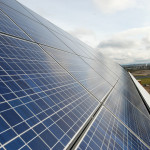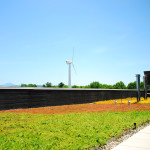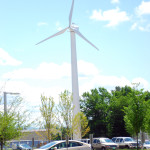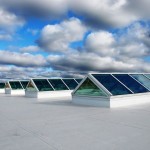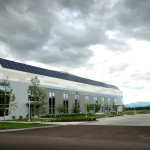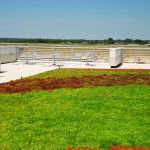At Heritage, we are committed to doing our part to minimizing our own impacts on the environment without sacrificing the level of quality and comfort we provide to our customers.
ENVIRONMENTAL SUSTAINABILITY
Clean sources of energy at Heritage Aviation.
-
SOLAR SYSTEM
A photo-voltaic electrical system generates a system-rated output of 23.94 kW AC from on top of our hangar at 228 Aviation Avenue.
-
WIND TURBINE SYSTEM
A Direct-Drive Northwind 100 Wind Turbine rated at 100 kW, 3 Phase, 480 VAC, 60 Hz. has been generating electricity from our campus since 2009.
-
GREEN ROOF
A 12,196 square foot mixed-vegetation green roof that limits the heat island effect thus reducing the cooling and heating needs of the building.
Heritage’s FBO facility is the embodiment of our commitment to the environment. It is LEED Gold Certified, a national benchmark for the design, construction and operation of high-performance green buildings. The project received high points on the specific green building criteria in six categories: Sustainable Sites, Water Efficiency, Energy and Atmosphere, Materials & Resources, Indoor Environmental Quality and Innovation in Design.
Heritage Aviation is committed to protecting the environment, the health and safety of our employees, and the community in which we conduct our business. It is our policy to seek improvements throughout our business operations to lessen our impact on the local and global environment by conserving energy, water, and other natural resources; reducing waste generation; recycling and purchasing recycled products; and reducing our use of toxic materials. We are committed to pollution prevention, continual improvement and meeting or exceeding all environmental regulatory requirements.
Heritage Aviation shall give preference to suppliers whose products have environmental friendly attributes that reduce natural resource consumption and greenhouse gas emissions in the product life cycle, maximize post consumer recycled content, minimize toxicity and packaging, or have any other environmentally preferable attributes, with comparable quality and price.
Even the building itself is recycled. Originally an Army National Guard hangar built in the 1950’s, the building was stripped to its steel and concrete skeleton and reborn as this 80,000-square foot state-of-the-art facility.
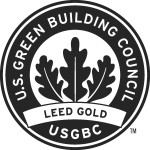

- One of the largest green roofs in New England. Rainwater that falls on the rooftop vegetation is then collected and re-used for aircraft cleaning and irrigation. The roof also keeps the building warmer in the winter and cooler in the summer.
- On-site renewable energy production, including solar panels and a 100-kW FAA-approved wind turbine, the first ever installed at an airport.
- A fleet of zero-emission electric ground vehicles, including four aircraft tug vehicles and an electric cherry picker.
- Extensive use of skylights and daylighting in the hangar, plus all-white paint that allows natural light to reflect as much as possible, saving about 200 kilowatt hours for every day the facility is in use. It also makes for a more pleasant work environment for our crew.
- Solar-powered hot water.
- LED lights for roadway, parking and sidewalk lighting which significantly reduce energy requirements.
- Locally sourced and eco-friendly construction materials.

